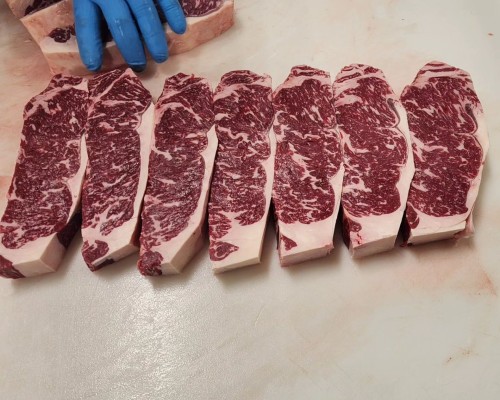Step back in time to the era of the Great Depression, a period filled with challenges and scarcities. In those challenging times, people learned the art of making do with what they had and stretching their resources to the limit.
Though we find ourselves distanced from that bygone era, there are profound lessons we can glean from it that remain relevant even today. Explore with us the world of frugality during the Great Depression, where every single penny counted, and resourcefulness became a way of life.
Embarking on this captivating journey, we’ll discover that it goes beyond mere monetary savings. It’s a mindset that embraces simplicity, optimizes resources, and cherishes our environment. Let’s take a glimpse into history and discover invaluable insights that can shape our present and future.
13 Frugal Living Tips From The Great Depression
Here are some valuable tips for living frugally, inspired by the Great Depression:
1. Make Your Own Clothes

Ever thought about making your own clothes? In the era of the Great Depression, creating one’s own garments was not merely a pastime but an essential need. It was a way to save money and express individuality.
With just a few basic supplies like scissors, needles, thread, fabric, measuring tape, and pins, anyone could create their own unique garments.
Whether you prefer the convenience of local stores or the vast selection offered online, you can easily find fabrics to suit your needs. It’s like being a fashion designer on a budget.
Another frugal tip from the era was repurposing old clothes into new ones, using existing pieces as patterns for cutting fresh outfits.
2. Grow Your Own Food
Growing your own food was a survival strategy during the Great Depression. Families planted gardens or fruit trees to supplement their food supply.
By utilizing this method, you can not only cut costs but also relish in healthy and fresh nourishment. Plus, It’s like having a grocery store right at your doorstep, isn’t it?
According to a study by the National Gardening Association, a well-maintained food garden can yield a $500 return when considering a typical gardener’s investment and the market price of produce.
3. Cook From Scratch
Amidst the Great Economic Downturn, preparing meals from original ingredients was not merely a decision, but an imperative. This era gave birth to many simple, inexpensive recipes that required only a handful of ingredients.
Dishes like potato soup, fried corn, canned stew, and simple desserts like jello and fruit salad were common.
Even today, cooking at home is a more budget-friendly option than dining out. Planning meals around naturally frugal recipes can significantly reduce grocery expenses.
4. Breathe New Life into Old Items
Recycling and transforming old objects was a widespread habit during the Great Depression. Families during the Great Depression were masters of repurposing, turning their old items into something new and useful. This approach not only saved money but also reduced waste.
For instance, bones and organs from cooking were used to make flavorful broths, stale bread was repurposed into breadcrumbs for meatloaf, and leftover mashed potatoes could be fried into small cakes the next day.
5. A barter system for goods and services
People had to use unconventional means of acquiring essential commodities and services during the Great Economic Downturn. One such method was bartering or trading goods or services without involving money.
For example, one could exchange a basket of homegrown vegetables for a handmade piece of clothing. This method of conserving funds while fostering camaraderie and collective support remains relevant even today.
Remarkably, even in today’s world, bartering remains a viable option, especially within local communities or through dedicated online platforms.
6. Use Every Part of the Animal
In the Depression era, nothing went to waste, especially when it came to food. People in the past made use of every part of an animal, including bones and organs.
One notable approach from the past not only maximized the value of animals but also enriched the diet with extra nutrients.
Bones could be boiled to create rich broths and stocks, while organs could be used in a variety of dishes. This approach encourages respect for the animal by reducing waste and can also lead to discovering new, delicious recipes.
7. Reduce Meat Consumption

With the rising cost of meat, why not turn to more affordable protein sources like legumes and greens? Nowadays, the realm of delightful vegetarian and plant-based recipes allows us to reduce our meat consumption without feeling deprived.
8. Make Your Own Laundry Soap
One cost-effective practice from the Great Depression is crafting your own laundry detergent. Cleaning solutions can be made with simple ingredients such as soda ash, borax, and solid soap. Plus, customizing the detergent enables you to cater to specific skin sensitivities or allergies.
9. Shop at Yard Sales and Thrift Stores
During the Great Recession, savvy individuals saved money by exploring yard sales and thrift stores. Thrift stores and second-hand shops are treasure troves brimming with a wide array of items, ranging from clothing to furniture and household goods.
Embracing second-hand shopping not only saves money but also promotes sustainable consumption and reduces waste.
10. Meal Plan by Shopping Your Pantry First
In times of limited resources, families had to be creative with their meal planning. You can adopt this frugal practice today by first examining the items in your pantry and fridge.
Base your meals on what you already have and create a shopping list only for the necessary ingredients. Practicing a thoughtful approach to meal planning not only curtails food waste but also prevents unnecessary expenses on items we might already have at home.
According to a study by Hennepin County Climate Action, meal planning can significantly reduce food waste, by up to 40%.
In addition, the Natural Resources Defense Council reports that wasted food contributes to 2.6% of U.S. greenhouse gas emissions, equivalent to one in seven cars. This simple yet effective step highlights the crucial role of meal planning in minimizing waste and maximizing value.
11. Entertain Yourself Without Spending Money
During times of financial hardship, seeking cost-free entertainment becomes essential. In the present day, you have a multitude of possibilities to explore without emptying your wallet. Embrace nature walks, picnics, public events, or free community gatherings.
Embracing a hobby that demands minimal investment, like reading, crafting, or playing board games with your loved ones, can bring joy and fulfillment to your life.
12. Wear Layers to Stay Warm

During the Great Depression, heating expenses were a luxury many couldn’t afford. To stay warm and save money, people relied on the simple yet effective technique of wearing layers of clothing indoors.
Presently, you can put this frugal living tip into practice by dressing warmly at home during colder months and using blankets to stay cozy. This way, you can decrease your reliance on heating systems and see noticeable savings on your utility bills.
13. Relax by Candlelight
In times when electricity was costly, candles offered an economical way to light homes. Reimagining this frugal practice by incorporating candlelight into your evening routines not only saves electricity but also creates a soothing and serene atmosphere in your home.
Unwind and enjoy the soothing ambiance without worrying about high lighting costs.
Wrap Up!
Incorporating frugal living tips from the Great Depression era into our modern lives can yield significant benefits. It enhances resilience and stability in the financial sphere.
From budget-friendly entertainment options to energy-saving techniques, these time-tested strategies have stood strong.
By integrating these tips into our lives, we not only stretch our budgets but also cultivate gratitude for the abundance that surrounds us
I’m Grayson Watson, your frugal companion and the brain behind this money-saving extravaganza. Strap yourself in, because we’re about to embark on a wallet-friendly adventure like no other. Learn More!

